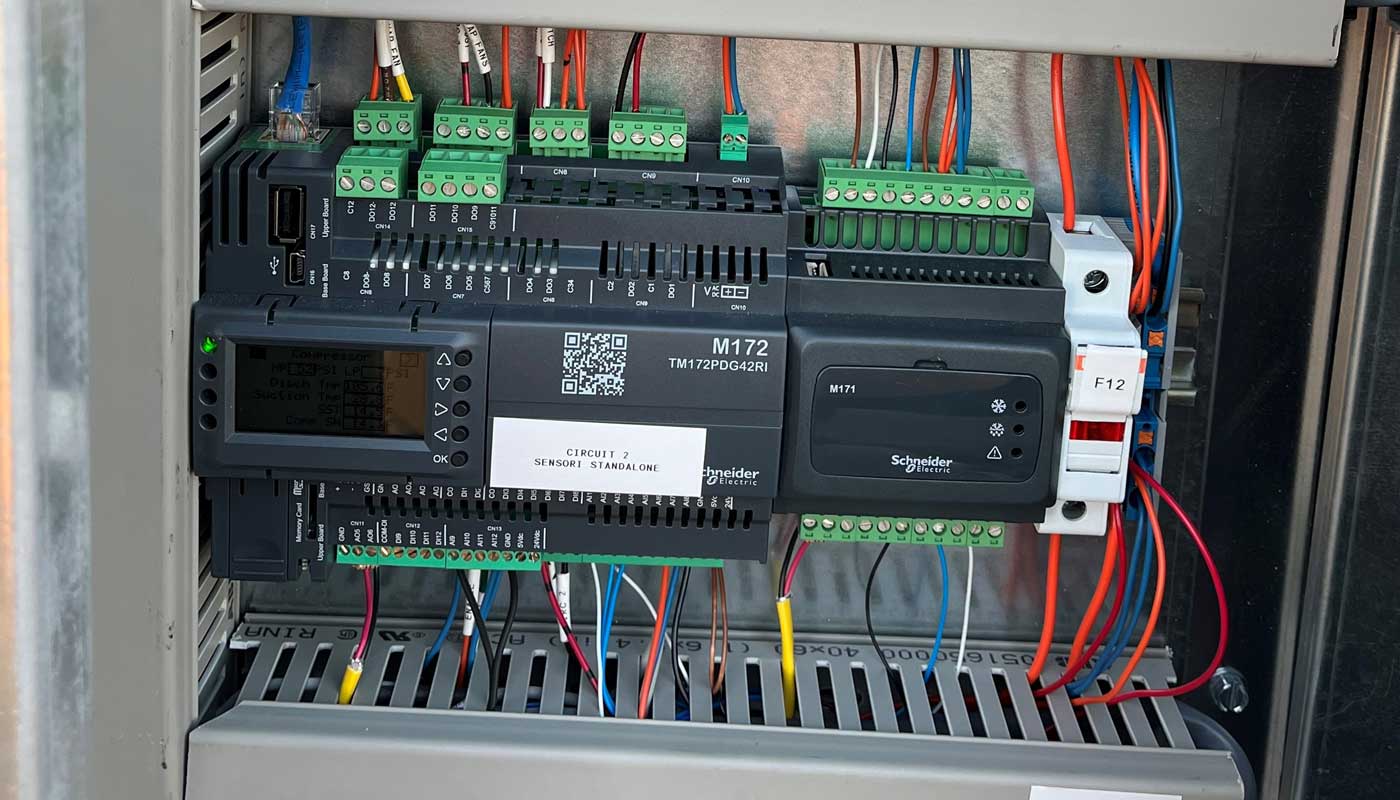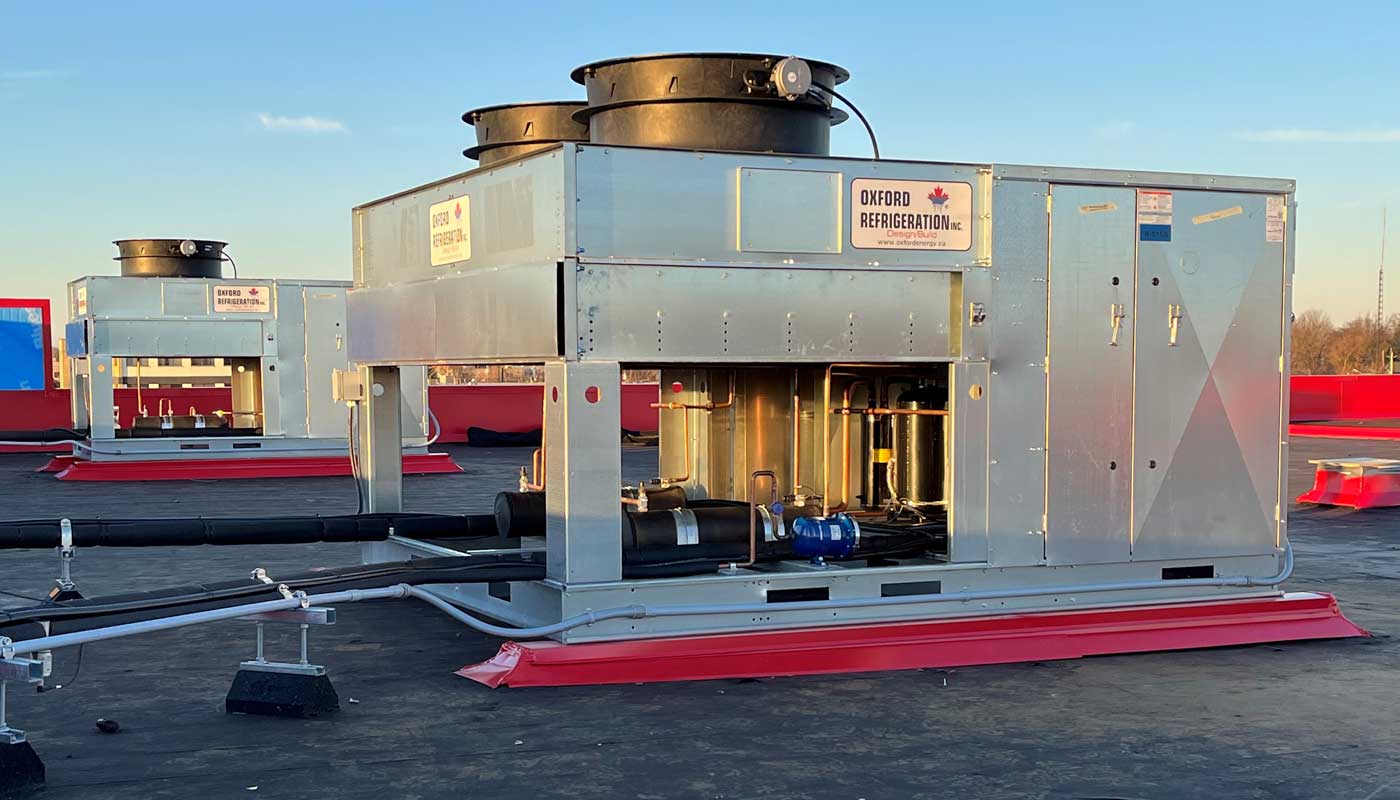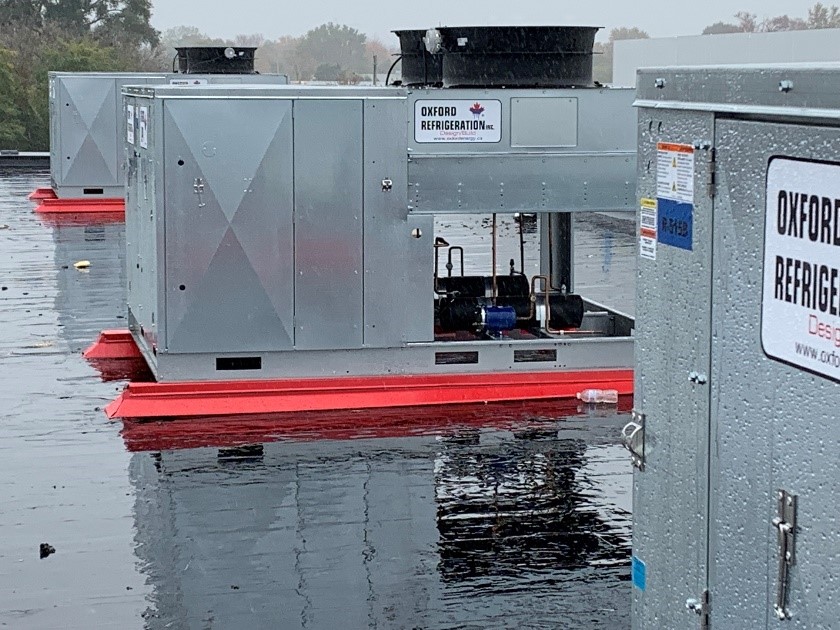The Oxford LPP™ – Innovative Design Supports R-515b at Southwestern Ontario Meat Processing Facility
There are many reasons commercial refrigeration is facing the necessity to make changes and upgrade systems – outdated equipment, inefficiencies, costly repairs, expansions, new regulations on chemicals… The fact is many systems are still operating using technology from 50 years ago and the world has changed – a great deal – and we need to make changes with it if we are to reduce our carbon footprint. Global regulations and the accelerated phase-out of HFC-based refrigerants have driven the need for better chemical compounds for efficient and safe refrigerants with a low and reduced GWP. OEMs in the refrigeration industry have answered new requirements with systems that employ high-pressure refrigerants because they have a low GWP. The inherent problem with high-pressure fluids is the leak risk. Without a zero-leak rate strategy in place, OEMs and end-users alike are only looking at short-term solutions and the environment deserves something better.
Sikorski Sausages Company Ltd is a second-generation family-run business in Southwestern Ontario, that produces and packages over 100 high-quality specialty European meat products. They rely heavily on large refrigeration systems to maintain product safety and freshness during processing, packaging, and storage operations. When the necessity came to upgrade their refrigeration system, Peter Sikorski wanted a long-term solution with the lowest overall total cost of operation and the lowest impact on the environment that would offer the company the highest quality, most reliable protection for their products. As quality meat processors, Sikorski’s understands the need to be environmentally conscious while protecting their profits. The necessity to utilize top-quality cooling systems is imperative for both protecting the environment from harmful emissions and protecting their products and profit margins.
The decision on what to use when expanding and retrofitting is important from a longevity standpoint as well as energy, maintenance, and sustainability. Beyond affordability, OEM’s must consider how to provide end-users with the most suitable, practical solution without compromising efficiency or the environment. Innovation can open the doors of opportunity – and that is what Oxford Energy Solutions Inc. brought to the Sikorski facility. Pairing technology, innovative designs, and a new refrigerant with low-pressure and a GWP reduction of over 90%*, the 100% Canadian-made Oxford Low-Pressure Platform (OLPP™) integrates new equipment with a low-pressure platform.
The control architecture is the backbone of the OLPP™ that allows the implementation of a low-pressure/low GWP refrigerant to be applied to outdoor condensing unit applications for all weather conditions. Honeywell’s R-515b is a non-flammable, hydrofluoro-olefin (HFO) blend with a much-reduced GWP of 293. It demonstrates environmental and performance benefits in commercial refrigeration systems, offering a low environmental impact alternative to HFC fluids that do not meet regulatory criteria. The fundamental design of the OLPP™ is to always maintain the lowest operating refrigerant high side pressure, keeping the differential pressures at a minimum. Using advanced smart controls with the Sensori control™ system, IPC connected digital diagnostics, oil-free/semi-hermetic compressors, and electronically driven devices, the OLPP™ is breaking ground for the utilization of low-pressure, low GWP refrigerants that revolutionize the cooling industry.
The OLPP™ platform uses Vapour Drive™ technology that offers an oil-free, VFD controlled, magnetic drive scroll compressor that operates from 0% to 100% load, crushing conventional compressor performance. Limitations of both speed variation and load profile have been removed with the use of electronic expansion valves (EXV), variable frequency drives (VFD), and the use of full floating head condenser control. This field repairable, semi-hermetic scroll design dramatically reduces energy consumption, system complexity, maintenance requirements and employs low-pressure refrigerants. The low-pressure differentials eliminate the need for high pressures, while smart controls regulate temps. The Sensori Control™ system gathers and processes critical data generated by equipment enabling on-premises analytics as well as cloud-based, remote connectivity. It auto-configures any refrigerant and applies the control program to all aspects of the operation. Taking information from the system and creating an envelope of proper/ideal operations, Sensori™ Controls create a template to be shared/applied across the system. Machine learning and adaptive predictability allow the system to change load profile and maintain temperatures, pressures, etc. The low pressure/low-temperature operation of the OLPP™ is ideal for utilizing a lower pressure refrigerant – showing less mechanical stress on key system components such as piping, fittings, gaskets, and connections while lowering the risk of potential refrigerant leaks
The ability to employ the R515b in a commercial food storage/manufacturing facility accelerates a greater sustainable outcome than Ammonia or CO2 based on overall mechanical requirements, energy consumption, and maintenance costs over the life cycle of the equipment. The investment in a low GWP/HFO platform has no limitation to ambient conditions and removes the requirement for any secondary inputs (i.e., water). Sustainable refrigeration cannot come at the expense of consuming a natural resource at vast rates. This resonates deeply in the food production industry where owners are continually striving to find ways to reduce water waste. By integrating the cutting-edge design of the OLPP™ at their meat processing facility, Sikorski is using the sustainable low-pressure R-515b, cutting energy costs by up to 50%, implementing technologies that will save on maintenance costs, and protecting their profit margins.
The overall system architecture does not rely on one main component as a key contributor to the success of the system efficiency. The OLPP™ platform relies on the combined net effects of all the individual benefits of these system components working together to achieve improved system efficiency. The technology and design utilize the lowest GWP HFO refrigerant offered today – working in a refrigeration platform that has continued to be refined over the past 16 years at the Oxford Energy solutions Inc/Oxford Refrigeration Inc facilities. Honeywell’s HFO-blended low-pressure refrigerant is combined with a low-pressure differential refrigeration architecture design, built on a zero-leak rate approach, to provide a sustainable system that is setting a new standard in reliability, low maintenance, and energy efficiency. It is about creating the best core refrigeration platform possible with unlimited future adaptability. The sustainable design of the system architecture is ready for the adaptation of solar on board and can accommodate any future low-pressure GWP refrigerants as they are tested/approved without changing the system. The Oxford LPP ™ and HFO refrigerants when designed in conjunction with evaporator/case layouts meet all current California state guidelines and European directives while maintaining a 50lb or lower refrigerant charge.
The refrigeration industry is required to act now to find alternatives to conventional methods that are being phased out – and for good reason. We need a long-term solution with safe and efficient Low GWP chemicals, innovation, and effective designs that provide superior cooling, energy savings, and benefits the bottom line. Now we have a great answer – one that surpasses temporary solutions and provides an investment for customers without limitations on what comes tomorrow.
*Compared to R404a














